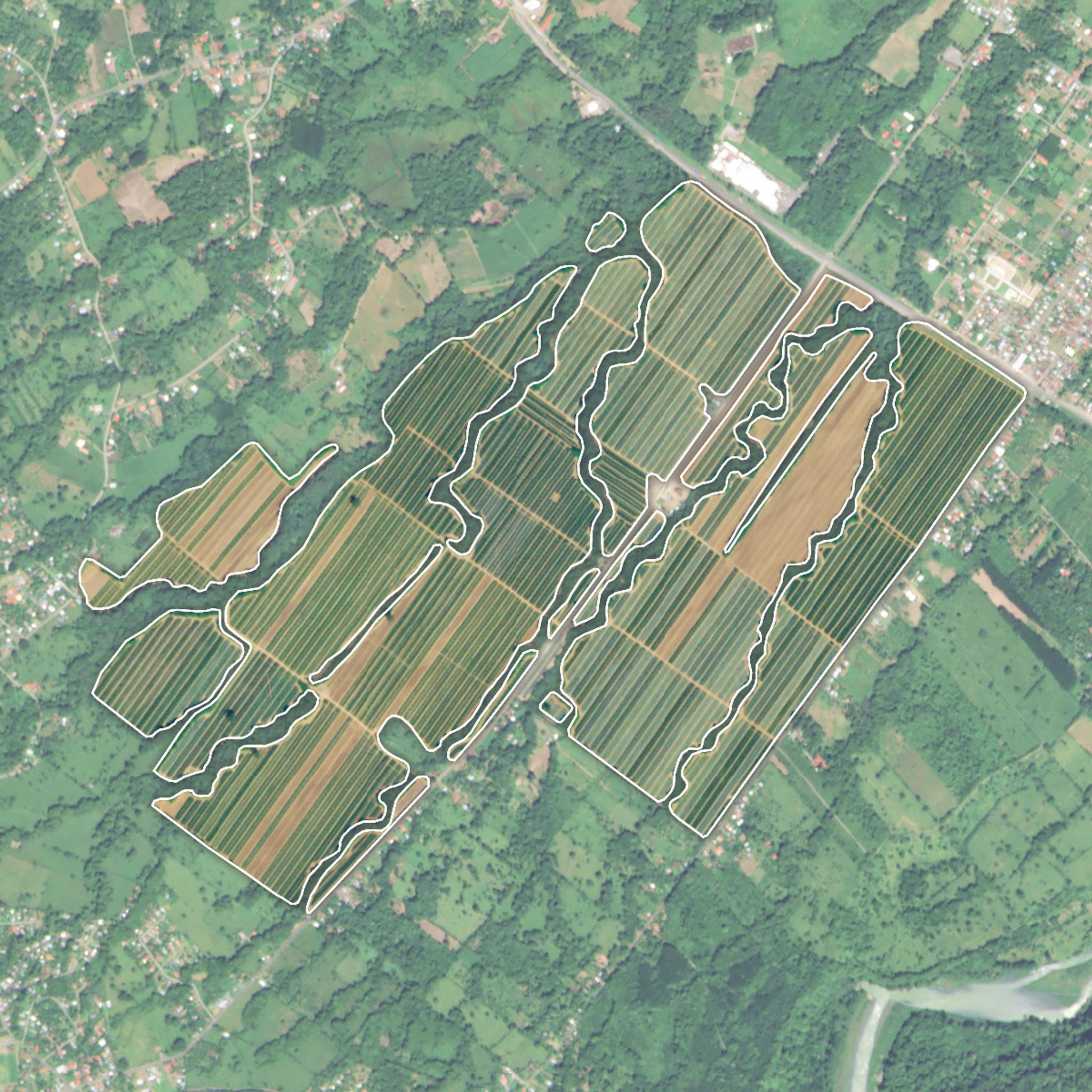Analyzing the Impact of Agricultural Activity on Ecosystems

PlanetScope imagery of a pineapple field in Limón, Costa Rica. © 2019, Planet Labs Inc. All Rights Reserved.
StoriesHow a Multi-Stakeholder Project, MOCUPP, is Advancing Costa Rica Towards Sustainable Practices to Protect the Country’s Biodiversity
Costa Rica is one of the most biodiverse places in the world, containing nearly 6 percent of the world’s biodiversity. As a result, its ecosystem provides a range of services including wood and timber, plants, and fruits, amongst many others that have fueled industry, scientific research, and culture. Biodiversity also plays an essential role in the well-being of the planet. When biodiversity is abundant, there is an increase in ecosystem productivity that supports a larger number of species and therefore a larger variety of crops. Additionally, biodiversity protects freshwater sources, breaks down pollutants, and contributes to climate stability. To conserve this rich environment, Costa Rica has signed forty-five international environmental treaties in addition to enacting regulator bodies to protect its diverse environment. The National Center for High Technology (CeNAT)’s Monitoring of Change of Use in Productive Landscapes project (in Spanish, “Monitoreo de Cambio de uso en Paisajes Productivos” - MOCUPP) uses Planet satellite data to monitor the changes in land use and analysis of deforestation processes associated with agricultural dynamics in the country. [caption id="attachment_147019" align="aligncenter" width="1200"]



Ready to Get Started
Connect with a member of our Sales team. We'll help you find the right products and pricing for your needs

